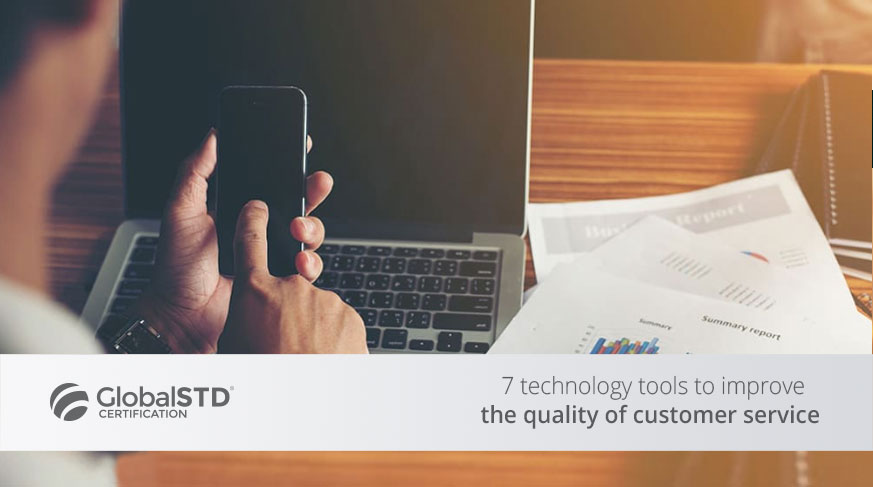
7 technology tools to improve the quality of customer service
We live in a time that most people see technology as quality attention, accessibility, individualization, and reliability.
Clients’ needs grow rapidly and at the same time replying time decreases and competence rises. The standardization of products turns customer care the focus of companies.
Contemporary consumers indicate the path for the attention they want to receive; nowadays everybody is on social media and mobile interaction, so according to the report “State of Multichannel Customer Service” of Microsoft, 90% of consumers request an easy experience where they can find coherence and continuity among the different channels they used; also, according to “The mandate of intelligent customer service” of Forrester Consulting, about 2.7. of users search different channels.
Microsoft report, which we had mentioned before concludes that four channels are often used: email (82%), phone (72%), chat (58%), online self-service and frequent questions (56%).
How can we get this software and offer customer service according to our client’s?
Currently, there are different programs to achieve efficiently customer service further, this enables us to know their needs and offer a better-quality experience.
Next, we will present 7 technology tools to improve your company’s work:
1. CRM or Customer Relationship Management
A useful tool focused on multichannel meaning that within the same platform includes, logistic and client management procedures. You can fit the CRM to your needs, there’s currently a variety on the market to customize the company’s needs. Having a bigger agenda that gathers client’s information, automates publicity delivery, separated by a campaign, and provides internal and external process indicators.
2. The cloud
The cloud is one of the main technology breakers that extends a greater competitive advantage to small and medium companies searching for this trend since this gives software solutions to a lower price. Working on the cloud gives to companies an important value to their work. Cloud computing enables users to efficiently communicate, share knowledge, and organizes an optimal way to store or find information.
3. Social media
In the beginning, social media was only for entertainment but nowadays is a lifestyle adopted by people that have taken the media as a connection. Facebook, Fans page, Facebook groups, Twitter or Instagram are the most popular ones, among clients to keep reports and clients. The goal is to provide the relevant content or onsite messages, by helping them to straighten their condition. Other options are Periscope, Pinterest, Vine, LinkedIn, among others.
4. Automatic Marketing Email
These email campaigns are a strategic way companies used. Platforms are helping to do this on a greater scale in minutes. Using this technology to improve reply processes, instant messaging like the following: publicity, reports and any other source of files.
5. WhatsApp
At the beginning was considered as an informal way of communication, but currently is one of the best wats to do campaigns among clients, provide reports to potential clients. Also, there are other tools like whatsappend and WhatsApp marketing.
6. Live chat
There are some services or products which you need to speak with someone to get an explanation or guide the purchase decision, therefore it is ideal to have a live chat to assist and help clients and likely clients; some recommended applications are Zopim, Purechat, Smartsupp.
7. Geolocation
Almost every current app uses geolocation. This tool enables companies to implement actions from their apps to the customer in different locations. Using geolocation, companies obtain information about their purchase processes and real-time consumer habits. By implementing these technology tools will bring advantages and noticeable improvement, by measuring the client’s satisfaction, 365 days, 24 hours client interaction, process automation, and marketing actions and customize communication.
